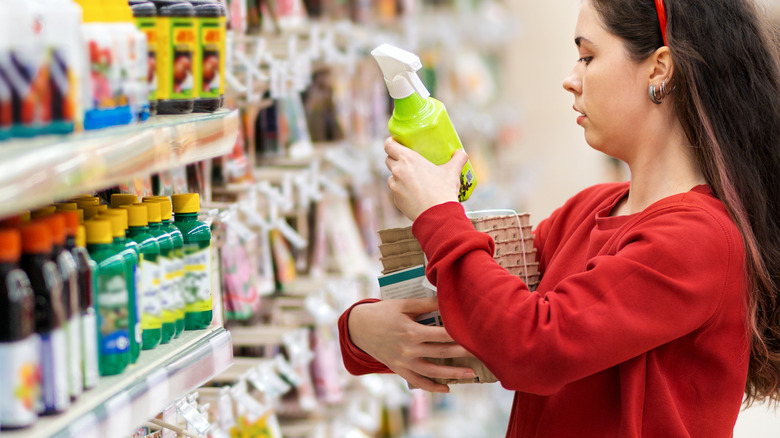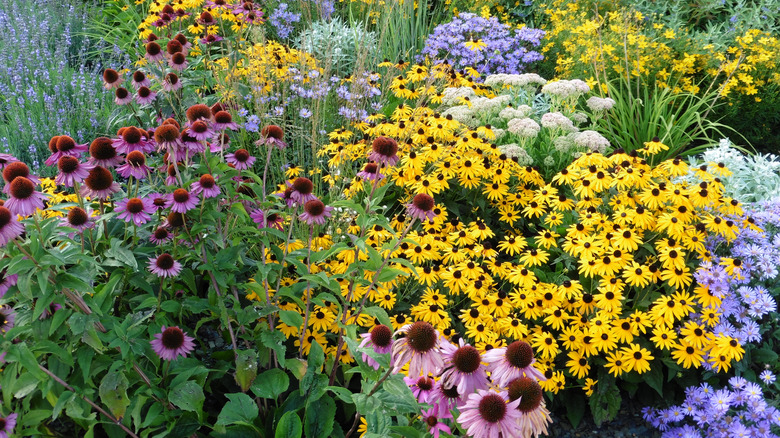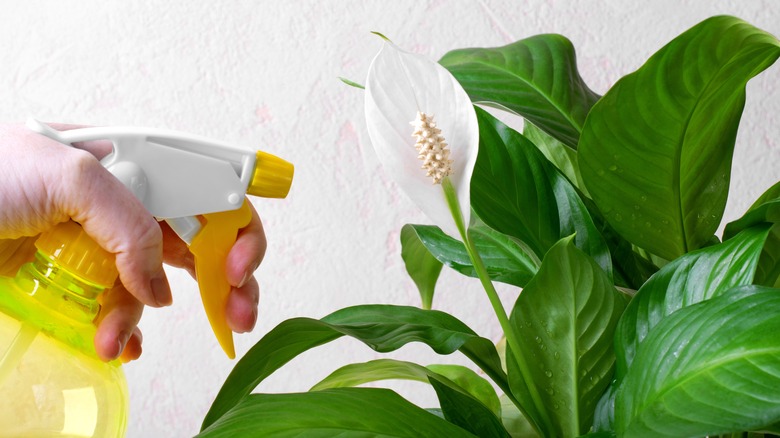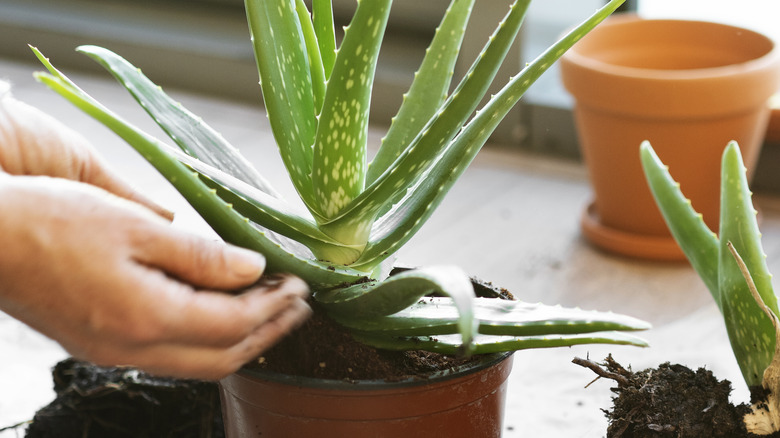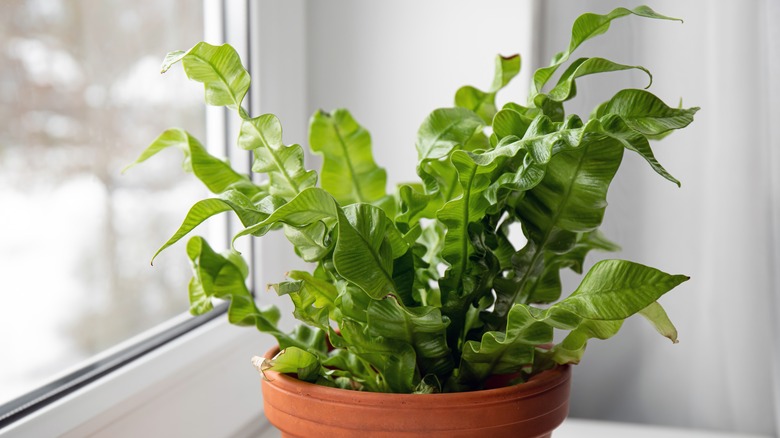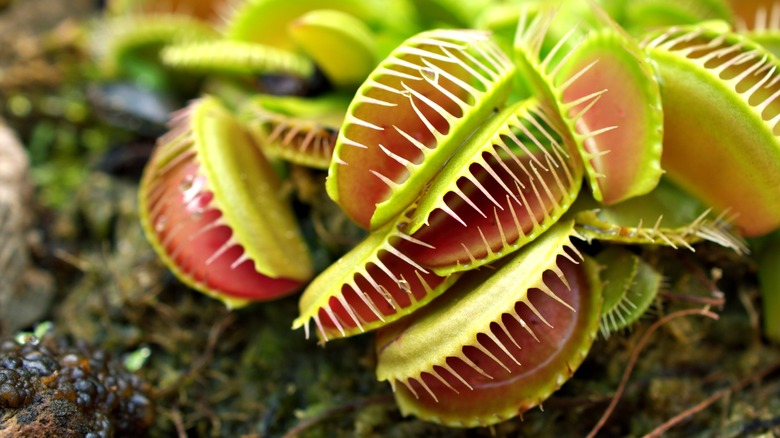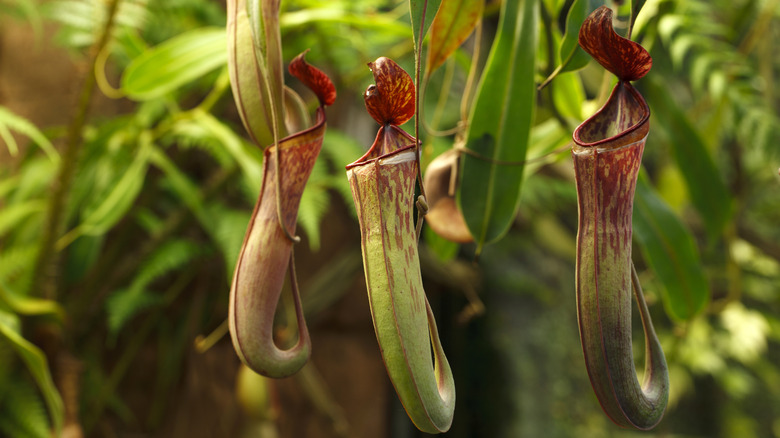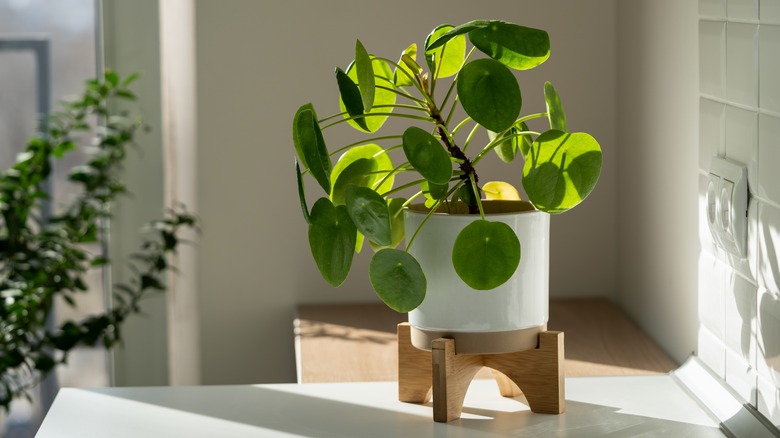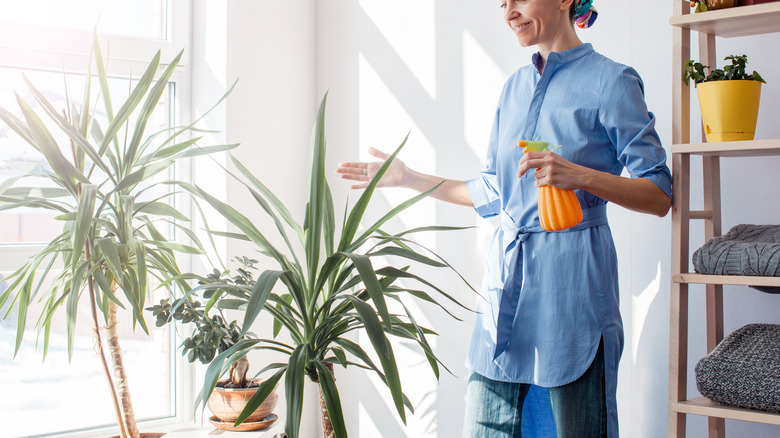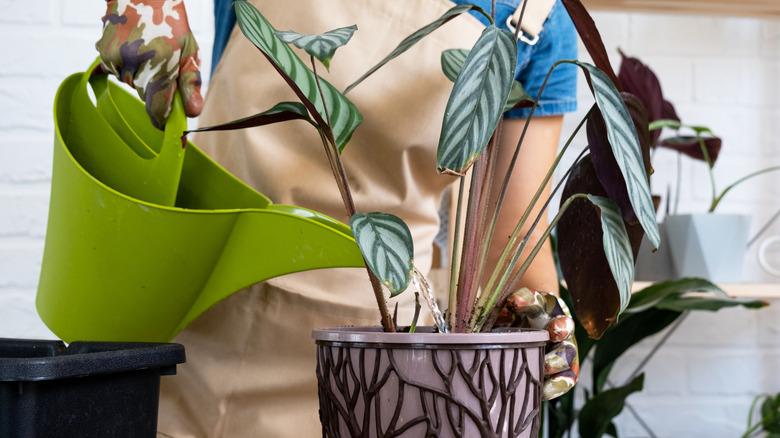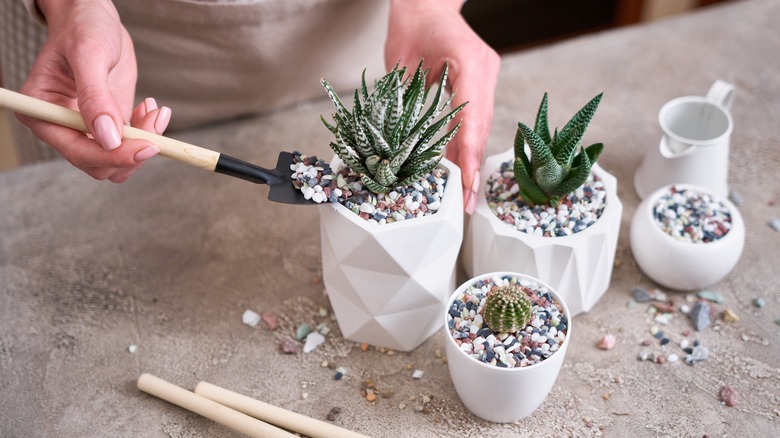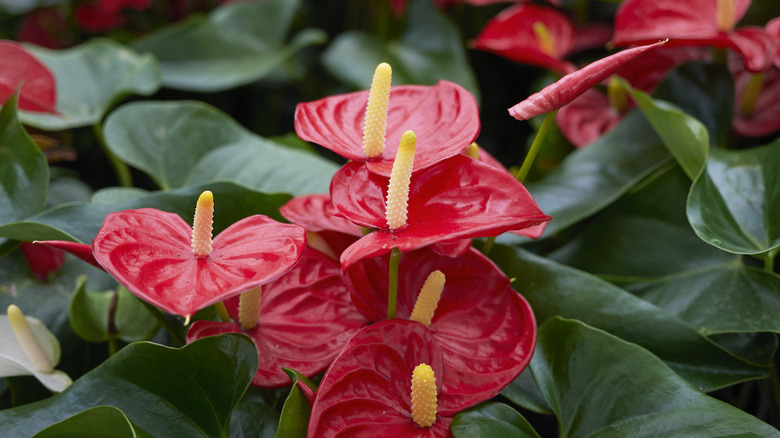Low Maintenance Plants You Don't Have To Fertilize
When it comes to working out how much to fertilize your garden or houseplants, or indeed, whether to fertilize them at all, it helps to understand that plants don't actually need us to feed them because they make their own food through photosynthesis. When growing in the ground the roots of the plant absorb moisture and minerals from the soil while the leaves take in carbon dioxide from the air. They use energy from the sun to turn these substances into food so that they can grow and reproduce. It may be more useful to understand fertilizer as a kind of supplement instead of as a plant's main food source, providing any extra nutrients they might not be getting naturally due to a poor quality growing substrate, poor health due to disease, or insufficient access to sunlight.
There are also certain plants that are so low maintenance that you may not have to fertilize them at all. This could be because they have their own efficient way of getting access to the nutrients they need, or because they are too sensitive, and too much commercial fertilizer could damage their delicate root systems. You may even choose not to fertilize certain plants, like hedges and your lawn, because it will lead to excess growth and more maintenance. Here is our selection of low-maintenance plants that you don't have to fertilize.
1. Perennials
If you have healthy soil that was sufficiently prepared during planting, then your perennials will probably only need a top-dressing of compost in the spring. Perennials are plants that usually bloom once a year and live a long time, coming back to bloom again annually. There are exceptions, where the life span and blooming time vary. Some perennials that don't need fertilizing include black-eyed susans, asters, ornamental grasses, butterfly weed, dianthus, false indigo, and cone flowers.
2. Peace Lily
What's not to love about the luscious peace lily? These are popular indoor houseplants that look good even when they're not flowering, and don't need loads of fertilization. If your plant doesn't flower much though, feeding a fertilizer can help with the plant's growth and encourage more blooms. Be careful about over-fertilizing though, and watch out for the signs — brown spots on the leaves, and a green edge to the pretty white flowers.
3. Aloe Vera
This popular, independent plant is loved for its funky look and the fact that it is so easy to grow indoors. Having an Aloe vera plant growing in your home can be useful too, as you can harvest the gel found inside the thick leaves for a range of medicinal purposes. Preferring to be underfed, this low-maintenance plant doesn't really need fertilizing and prefers a well-draining commercial cactus soil that is low in nutrients.
4. Bird's Nest Fern
Like many other ferns, it can be easy to over-fertilize the bird's nest fern, and it can be useful to know that you don't actually need to fertilize them at all. By skipping fertilization you can avoid the pretty fronds turning brown or growing oddly. To keep it growing in tip-top condition you should definitely not fertilize more than two or three times a year, and always ensure it has plenty of humidity and regular watering, which all ferns need in order to thrive.
5. Venus Flytrap
The fascinating Venus flytrap evolved in marshy environments where nutrients were scarce. It makes sense that they don't require extra fertilization. Fertilizing these plants can burn their delicate root systems and kill the plant off quickly. Don't forget that this iconic plant gets its name from catching insects. It is a carnivorous plant that obtains the nutrients it needs from its animal prey. Just make sure it is planted in some peat moss and perlite or sphagnum moss, and keep the substrate damp.
6. Pitcher Plant
This carnivorous plant is similar to the Venus flytrap. Coming from poor soils originally, it has evolved to supplement itself with nutrients from caught insects. They have 'pitcher' shaped traps designed to attract, catch, and digest their prey. As they have evolved to enjoy insects as their primary source of nutrients they can't tolerate extra fertilization, and their roots are likely to burn.
7. Chinese Money Plant
This trendy plant is tough as well as attractive and doesn't need much fuss. Watch out for brown spots on the leaves as a sign that you might be fertilizing too much. It's not necessary to fertilize this plant, but if you do choose to fertilize during the growing season, only do so once a month and dilute the fertilizer well in order to avoid root burn as the plant has a very fine and delicate root system.
8. Jade Plant
The jade plant is a succulent, and like most succulents, it prefers lower quality, loose and well-draining, slightly acidic soil. It won't take up many nutrients at once, so fertilizing it is a waste of time and money. Just leave this plant alone, making sure it has access to enough sunlight, and it will thrive on your neglect. If you are worried that your plant's pot of soil may have run out of nutrients don't fertilize it more than once every six months.
9. Yucca
Yuccas can grow into impressive house and garden plants. They look very exotic, and you'd be forgiven for thinking they must need special care, but the truth is, this plant will be very happy if you leave it to do its own thing. You don't need to feed your yucca plant unless you feel it needs a helping hand to stop it from growing too slowly. But the best approach is to water it and forget about it for a while, then water it again when the soil is almost dry.
10. Calathea
While Calatheas enjoy a little more fertilizer than some of the other plants in this list, it will also happily grow without it. As a rule of thumb, Calatheas enjoy a bit of fertilizer to support them while they are growing, so if you have a young plant, or it is the growing season, some fertilization won't hurt. But be careful not to over-fertilize, or you may have to replace the soil completely as they don't like rich soil. Signs to look out for are leaves turning crispy brown at the edges.
11. Haworthia
Haworthia is a popular succulent houseplant that is great for beginners because it grows so well when left to its own devices. You don't need to fertilize this plant as it doesn't like rich soil. It grows very slowly, meaning it needs less food and minimal water due to the fact that it holds so much moisture in its thick succulent leaves. Just ensure your plant has well-draining soil — a sandy substrate works well. And don't put it in a spot where it'll get too much sun throughout the day.
12. Anthurium
If you love exotic-looking but low-maintenance houseplants, anthuriums are well-known and loved for their glossy, rich red flowers. This is not a plant that needs much care, let alone fertilization. However, a quarter-strength of fertilizer that is high in phosphorus once every four months, can help to encourage those beloved blooms. If you choose not to fertilize, the plant will be just as happy though.
